The Dorsal Root Ganglion (DRG) is a small bundle of nerves connected to each vertebra along your spine. The DRG is critical in processing pain signals and transmitting them to your brain. They have a particularly important role in how you experience pain. The DRG act as the body’s internal traffic light: they control when signals can enter the spinal cord, therefore allowing pain signals to travel to the brain.
The Dorsal Root Ganglion neurons modify your sensory perception (how you feel pain) before transmitting the signal to your spinal cord and central nervous system. This makes DRG stimulation an effective treatment approach for patients with chronic pain.
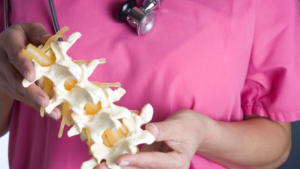
What is Dorsal Root Ganglion Stimulation?
Dorsal Root Ganglion stimulation utilizes a pulse generator that is implanted on the spine. The implant uses small electrical leads which are threaded into the epidural space where the DRG lies. The leads send a small electrical impulse to the area where the DRG is located. The impulses stimulate the Dorsal Root Ganglion to create a “red light.” This blocks pain signals from that specific area traveling to the brain.
The impulses either create a slight tingling sensation in the affected area, or has the ability to stop the pain altogether.
Benefits of DRG Stimulation
There are four specific benefits of targeting the Dorsal Root Ganglion for pain relief:
- Directed Targeting: Because the stimulator is implanted exactly where the pain is rooted, DRG stimulation can relieve pain in a specific area. The accuracy of this treatment has proven effective in 94.5% of patients who received targeted areas of pain.
- Low Energy: DRG stimulators use a tiny amount of energy – only about 10% of the energy that is required from a conventional spinal cord stimulator. The batteries in the DRG stimulator last longer because of the low energy requirement.
- Low Risk of Lead Migration: The DRG stimulators are tucked into a small space, limiting the chances of lead migration. There is reported less than 1% migration rate, whereas a traditional SCS reports an approximate 14% migration rate.
- Minimal Effects on Body Position: Due to the DRG’s location in the epidural space, the cerebrospinal fluid in between electrodes does not affect the patient’s posture or body position. The stimulation patterns remain constant regardless of any changes in the body’s position. Whether lying down, sitting down, standing, or walking, the patient receives the same pattern.
Your physician will first implant a trial DRG Stimulator using fluoroscopic guidance. Data is collected from this and evaluated to determine whether or not a permanent stimulator is beneficial.
If you think you are a good candidate for DRG Stimulation, fill out the form below. Someone from our team will get in touch!
Sciatica causes pain to radiate along the sciatic nerve’s path. It can disturb daily activities, quality of life, and causes discomfort. Pain can be caused when the nerves get pinched, and intense pain can travel into your legs. Sciatica can be repetitive, intolerable, and many times, the cause is unknown to the patient.
This type of pain can be treated with self-care and rarely requires medicine. Treatments depend on what is causing the underlying root of the pain. Natural remedies are available and can dramatically improve a patient’s condition. Patients should always be discussed with a medical professional before beginning any type of treatment.
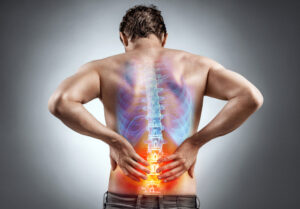
Natural remedies for sciatica
5 Natural Remedies for Sciatica Pain
Chiropractor
Patients who suffer from sciatic nerve pain often find relief from chiropractic adjustments. Adjustments can improve spinal function and in turn, reduce pain.
Yoga
While sometimes moving can aggravate sciatic pain, certain types of movements and stretching can actually reduce pain. Stretches that lengthen the spine or yoga positions that help develop good posture help reduce stiffness, inflammation, and pain.
Yoga is safe and effective for people with sciatic pain. It can strengthen core muscles, relax stiff areas, and help prevent further pain.
Acupuncture
Acupuncture is a traditional Chinese practice that maintains health by releasing the body’s natural energy. Tiny needles are injected into specific, targeted areas. Acupuncture helps improve blood flow, oxygen, and channels energy in a holistic approach. It has been FDA approved to treat back pain and chronic pain of all kinds, including sciatica.
Active Lifestyle
Working at a desk or lounging too long can worsen back pain. Sciatica treatments frequently recommend movement and staying active. An active lifestyle and targeted exercises allow for joints and affected areas to loosen up and relieve pain. Isometric exercises help relieve pain during the day; many of these can be performed at work or on the go. If you typically lead a somewhat sedentary lifestyle, investing in a fitness tracker can help motivate you to set activity goals.
Heating Pads
Heat loosens tight muscles and promotes blood circulation. Many people with sciatica find pain relief by using heating pads on a low setting for 15-20 minutes daily. Applying heat to the affected or painful area can be performed a few times a day, every few hours. Many heating pads are small and travel well, so it can be helpful to use while sitting at work. Another method of heat is taking warm baths. Water relieves pressure from your joints, also reducing pain, while the heat loosens up the muscles. For use on-the-go, one-time-use heating wraps may be used that are effective for several hours.
If you suffer from sciatica pain, the team at Progressive Pain Management can help. Fill out the form below to get in touch.
Peripheral neuropathy is the term used for disorders caused by damage to the body’s peripheral nervous system.
The peripheral nervous system connects nerves from the brain and spinal cord to the rest of the body. Including, but not limited to, the arms, legs and feet, joints, eyes, nose, and even the skin. Peripheral neuropathy is when nerves are damaged and cannot send messages from the brain to other body parts. This damage can cause numbness or pain in these affected areas.

How to Diagnose and Treat Peripheral Neuropathy
Peripheral neuropathy can be separated into two categories: polyneuropathy and mononeuropathy. People most commonly suffer from polyneuropathy.
- Polyneuropathy is when multiple nerves are affected
- Mononeuropathy occurs when only one nerve is affected
How is Peripheral Neuropathy Diagnosed?
There are many symptoms of peripheral neuropathy, such as numbness and tingling, severe sensitivity to touch, lack of coordination, and weakness, to name a few. Because the variety of symptoms is so vast, it can be challenging to diagnose this condition.
A diagnosis program typically includes a review of your medical history, a physical and neurological exam, blood work, and diagnostic testing.
- Medical History. Your doctor will review your medical history and ask questions regarding your symptoms, severity of pain, and what helps relieve the pain. Other factors may include your work environment, anything that triggers the onset of pain, social habits, exposure to toxins, alcohol and tobacco use, and family history of neurological diseases.
- Physical & Neurological Exam. Your doctor will perform a physical exam to look for any diseases that cause nerve damage, such as diabetes or celiac disease. A neurological exam will determine the cause of a neurological disorder and the severity of nerve damage.
- Blood Work. Blood tests are able to test for vitamin deficiencies, organ dysfunction, infections, and any abnormal bodily system activities. These tests can assist the doctor in determining diseases or disorders that cause neuropathic diseases.
Other tests that can be used to test for peripheral neuropathic diseases are imaging tests, nerve and skin biopsies, and nerve function tests.
Types of Treatments Available
Your doctor will recommend a treatment type based on the type of nerve damage, symptoms you display, and the area that is affected. With the guidance of a pain management specialist, you may be able to manage your neuropathic pain and reduce medications. As long as the nerve cell has not died, the consistent and definitive treatment allows for a functional recovery over time.
Treating Underlying Causes
By correcting the underlying cause of your neuropathy, it can many times heal itself and the nerves can recover and regrow. Simple lifestyle changes such as maintaining a healthy weight, eating a nutritious diet, and taking vitamin supplements can improve nerve health. Exercise delivers more blood, oxygen, and nutrients to nerve endings, therefore improving muscle strength and preventing muscular atrophy. Controlling glucose levels has also been shown to reduce neuropathic symptoms and help people with diabetes avoid nerve damage.
If an autoimmune disease or inflammation causes your peripheral neuropathy, symptoms can be controlled by using medications like prednisone. A procedure that involves stripping your blood of immune system cells and antibodies, called plasmapheresis, helps reduce inflammation or subdue immune system activity.
Using Medications
When your peripheral neuropathy is not caused by an underlying disease, medications can be used to minimize symptoms.
- Over-the-Counter Pain Relievers. Medications such as NSAIDs like naproxen, ibuprofen, and aspirin can relieve minor symptoms.
- Topical Treatments. Ointments that contain a substance found in hot peppers has been proven to reduce neuropathic symptoms. Lidocaine patches also provide pain relief, although side effects may include drowsiness, dizziness, or numbness.
- Antidepressants. Antidepressants interfere with the chemical processes in your brain that cause pain. Tricyclic antidepressants like amitriptyline help relieve pain. Drugs like Cymbalta (inhibitor duloxetine) may also ease neuropathic pain. Antidepressants have been known to cause side effects such as nausea, drowsiness, or constipation.
Spinal Cord Stimulation
Spinal cord stimulators (SCS) have been used to treat pain for over 50 years. The implanted device transmits therapeutic electrical signals to provide a therapeutic effect. Neuropathic pain is caused by damaged tissue and nerves. Spinal cord stimulators are surgically placed under the skin. They send mild electrical signals to the spinal cord and nerve fibers. These signals mask pain signals before they can reach the brain.
Therapies to Treat Peripheral Neuropathy
Therapy that helps ease the pain of peripheral neuropathy include:
- Physical Therapy. Muscle weakness and physical disabilities caused by peripheral neuropathic diseases can be reversed under the supervision of a physical therapist and a specialized exercise program. Braces, canes, and walkers may be used to aid treatments.
- TENS. Transcutaneous electrical nerve stimulation delivers a gentle electrical current at various frequencies. Electrodes are placed on the skin over the affected area.
- Plasma exchange. Plasma therapy means your blood is removed, processed to remove antibodies, and returned to your body. This helps suppress the immune system activity that causes inflammation.
Surgery for Peripheral Neuropathy
For some types of neuropathies, surgery is the recommended treatment option. Pinched nerves or conditions that compress nerve roots are generally treated with surgery to free the damaged nerve and allow for proper healing. Mononeuropathy is caused by compression or infections and often requires surgery to release pressure on the nerve.
Polyneuropathies such as diabetic neuropathy is not treated with surgery. If you suffer from polyneuropathy, surgery could potentially make your pain worse. Surgery that involves cutting or injuring the nerve can cause damage to the central nervous system. This has been known to cause phantom pain.
With the evolution of technology, less damaging procedures such as electrical stimulation have replaced surgery to treat peripheral neuropathy. To make an appointment or learn more about peripheral neuropathy, fill out the form below.
When you live with pain, the change in seasons isn’t always a welcomed change. Warmer weather and humid days may have your running for air conditioning. The expectations of summer typically include spending time outside, having cookouts, and even going on vacation – all things that can increase the symptoms of chronic pain.
Pain can take away from the joys of summer. It can mean getting out of bed in the morning is difficult, and instead of playing with the family, maybe you are just sitting inside and not being active.

Walking to Reduce Pain
However, although the heat can sometimes worsen your pain, various activities help relieve pain and strengthen your joints. By incorporating these activities into your daily life, you can get outside and enjoy the summer months.
Activities to Combat Reduce Pain
-
Yoga
Yoga has known health benefits, and has become the standard to promote relaxation and overall wellness. There are specific yoga poses that help reduce back pain, joint pain, and can help increase your range of motion.
Doing yoga in hot weather can help improve flexibility and even increases its effectiveness. Being in the heat has the same effect as hot yoga, which detoxifies the body, boosts your mood, and promotes mindfulness. Head to a park or the beach to practice some yoga this summer and find relief from your pain.
-
Indoor Swimming
Swimming is a fun way to relax and reduce pain. Swimming, water aerobics, and low-impact cardio exercises in the water are effective and safe ways to practice strength training, build muscle, and help reduce pain associated with sports injuries, arthritis, and sciatica. The water creates a natural resistance while relieving the pressure on your joints. Being in the water also naturally lowers your blood pressure.
-
Biking
Going for a bike ride on a smooth terrain is a great low-impact cardio exercise that strengthens muscles and can help relieve pain. The way you sit on a bike is helpful to those with spinal stenosis. Getting your blood flowing with some light exercise helps release endorphins, which act as your body’s natural pain killer, and can help improve your mood.
-
Lounging in a Hammock
What better way to enjoy the fall temperatures than with some rest in the shade. Laying in a hammock is a great way to enjoy the warmer weather while simultaneously getting rest and taking some pressure off your sore joints. Hammocks allow your body to rest in a very natural position, with your head slightly elevated. Hammocks also prevent you from rolling in your sleep, which can result in uncomfortable or potentially painful positions.
5. Hiking
Going for a walk or low-impact hike is a light aerobic exercise that improves your stability, burns calories, and corrects posture for multiple muscle groups. Make sure you are keeping your spine straight and allowing your core muscles to do the majority of the work.
Getting your blood flowing and incorporating some low-impact cardio exercises into your summer schedule is important to your overall health. Being outside and getting fresh air and sunlight can do wonders for your mood and help other aspects of your health – not just help reduce pain.
Fill out the form below to get in touch with the team at Progressive Pain.
Muscle pain is common and can originate in any muscle of the body. The medical term for muscle pain is myalgia. Myalgia can be described as muscle pains, aches, and pain associated with ligaments, tendons, and the soft tissues that connect bones, organs, and muscles.
Causes of Myalgia
Myalgia can typically be localized to one area of the body, or groups of muscles. The most common causes of muscle pain are stress, overuse, injuries, and tension. Muscle pain – specifically systemic muscle pain – can be caused by an illness, infection, or a side effect of certain medications.
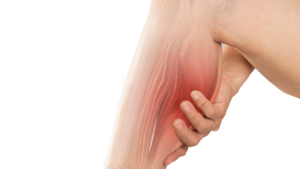
Myalgia Pain Causes, Symptoms, and Treatments
Common causes of myalgia includes:
- Chronic fatigue syndrome
- Fibromyalgia
- Lyme disease
- Lupus
- Myofascial pain syndrome
- Rheumatoid arthritis
Many other diseases and conditions cause pain to muscles such as hyperthyroidism, influenza, and dystonia.
Signs & Symptoms
Depending on the cause of your pain, muscle pain can be mild or severe, and in some cases, debilitating. Pain is the hallmark symptom of many chronic conditions. Symptoms can vary.
Muscle pain may be localized or widespread. Pain can be dull or sharp, mild or severe. With myalgia, the pain can be different, and may last a few minutes or constant. Unfortunately, the varying factors of your pain depend on many things.
Myalgia can cause fevers or chills if it is caused by an infection. It can also cause symptoms such as joint pain, or very weak (fatigue). Because of the pain, depression and feeling overly tired are common symptoms. This is true for most chronic pain conditions. Other symptoms can include tenderness, swelling, or redness.
It can be hard to do most of your daily activities if you suffer from myalgia and suffer from these symptoms.
Treating Myalgia
Muscle pain from overuse or injury can be reduced by resting the body and taking over-the-counter pain relievers or NSAIDs. Rotating between ice and heat within the 24-72 hours can reduce pain and inflammation and be soothing to the muscles, releasing any tensions or knots.
Myalgia caused by overuse or a condition like fibromyalgia can be treated by massage or gentle stretching exercises. A doctor should address pain that persists longer than three days.
If pain is a result of an activity or acts like “pulled” or strained muscle, the best course of method for at-home treatments is the R.I.C.E. therapy:
- Rest. Take a break from regular, daily activities
- Ice. Use ice on the affected area for 20 minute intervals throughout the day
- Compression. A compression bandage can be used to reduce swelling
- Elevate. Elevating your affected area can be used to help reduce swelling
If you experience pain that continues with rest, or if any signs of infections arise around a sore muscle, talk to a doctor about how to manage your pain. Seek immediate attention if you have trouble breathing, suffer from extreme weakness, or have a high fever.
Neuropathic pain is a severe burning or shooting pain. This is a condition that is more often chronic. Neuropathic pain is typically caused by severe, progressive nerve disease. This causes damage to various levels of the nervous system; the brain, spinal cord, and peripheral nerves. Also, it can be as a result of infection or damage. It mainly affects the lower back, limbs, and neck. Neuropathic pain can be constant, with the recurrent feeling of burning and shooting accompanied by loss of sensation or numbness.
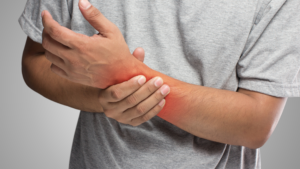
Causes of Neuropathic Pain
Unfortunately, neuropathic pain is widespread in the US. Researches show that based on best estimates, the prevalence of neuropathic pain among Americans may be between 6.9-10 percent. With chronic pain affecting over 20% of people in the US, neuropathic pain is the leading cause of pain. Populations most likely to experience this kind of pain include manual workers, women, people unable to work, people who are 50 years and above, and rural residents.
Causes Of Neuropathic Pain
The main causes of this form of pain can be categorized into four; disease, infection, injury, and loss of limb.
Disease
A lot of diseases can cause neuropathic pain, but at least 30% of these pain cases result from diabetes. Diabetic peripheral neuropathy affects at least 50% of people who have diabetes.
Other diseases that cause neuropathic pain include:
- Thyroid problems
- Multiple sclerosis
- Fibromyalgia
- Facial nerve issues like trigeminal neuralgia
- Connective tissue disorders
- Liver disease
- Kidney disease
- Alcoholism
- Multiple myeloma
Injury
Even when muscle, tissue, or joint injury has healed or leg, back, or hip problems improve, sometimes damage to the nervous system might not go away. Trauma caused by spinal injuries like spinal cord compression and herniated disc can damage your nerves near the spine. Also, iatrogenic injuries when doctors cut nerves during a surgical operation can cause chronic neuropathic pain.
Infection
Lyme disease, shingles, HIV infection and AIDS, Syphilis, hepatitis B and C, Epstein-Barr virus, leprosy, and diphtheria can also cause neuropathic pain.
Limb Loss
When your hand or arm is amputated, you can suffer neuropathic pain. This is because the nerves near the amputated part may send incorrect signals to the brain, making it feel like the removed limb is in pain.
Neuropathic Pain Treatments
Neuropathic pain treatment aims to know the underlying condition or disease causing the pain and treat it if possible.
The main aim of your pain specialist is to offer pain relief, assist you in maintaining your usual capabilities regardless of the pain, and enhance your life quality. Some of the common treatments include:
Over-The-Counter Medication
NSAIDs like Motrin and Aleve can sometimes be used to treat this kind of pain. Unfortunately, many people don’t find these medicines effective for neuropathic pain, since they do not target the primary source of the pain.
Antidepressant Drugs
These kinds of drugs have shown positive results in treating neuropathic pain symptoms. Two common types of these drugs are prescribed to patients with the following conditions.
- Serotonin-norepinephrine reuptake inhibitors
- Tricyclic antidepressants
These drugs may treat the pain and the symptoms of anxiety or depression caused by chronic pain.
Implantable Device
This is an invasive procedure whereby a surgeon implants a device in your body. Doctors can implant the device in the spine or the brain. After the device is in place, it will send electrical impulses into the spinal cord, brain, or nerves. These impulses may control symptoms and end the irregular nerve signals.
Get Help With Neuropathic Pain Today
Now that you know what neuropathic pain is, its causes and how to treat it, it’s time to see a doctor. Ensure you visit a doctor for the correct diagnosis and a treatment plan. When you get proper treatment, you may find relief and live a high-quality life.
Contact the team at Progressive Pain for help or fill out the form below and start your treatment today.
One of the most common causes of heel pain is plantar fasciitis. This inflammation affects a band of tissue that runs along the bottom of your foot, connecting the toes to the heel bone. Pain may decrease throughout the day but is typically more severe in the morning or after long periods of sitting.
Causes of Plantar Fasciitis
Our body weight rests on our feet – heel, toe, heel, toe. As the foot bears weight, it flattens and puts pressure on the plantar fascia. The plantar fascia pulls on the band of tissue that attaches the toes to the heel.
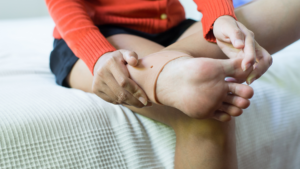
If the foot is aligned, the pull does not cause problems. However, if the foot rolls outward at the ankle or the arch is not supported, there is an abnormal pull on the band of tissues, causing pain.
Causes may include:
- Lack of arch support
- Weak ankles that roll
- Increase in activities: running, tennis, soccer
- Obesity
- Poor flexibility
- Standing for long periods of time
- Wearing shoes with little support and little cushioning
Signs and Symptoms
When you have plantar fasciitis, it can feel like you have bruising or an ache in the bottom of your foot. The pain may be worse in the morning but will diminish as you walk and move around. It is common for pain to return if you spend too much time on your feet. If the nerve becomes swollen, pain can radiate to the ankle.
Without treatment or proper care, the plantar fascia may eventually tear. This torn area becomes filled with calcium, creating a heel spur. The foot can feel warm, tender, and swollen.
Plantar Fasciitis Treatments
Treatment options vary depending on the patient and the severity of their pain. Often, treatments are focused on reducing inflammation and pain. This can be through applying ice to the affected area. Physical therapy techniques, such as stretching and increasing range of motion, are helpful in reducing pain and preventing further injury.
Other treatment options include:
- Rest – Taking a break from weight-bearing activities can reduce your pain. Elevating your foot when sitting reduces swelling.
- Orthotic shoe inserts – Use shoe inserts to reduce excess motion and to decrease strain on the plantar fascia.
- Splinting at night – wearing a splint at night keeps the plantar fascia stretched while you sleep to prevent pain in the morning.
Ignoring foot pain can lead to ankle, hip, or back pain, so it’s important to see a physician if you suffer from plantar fasciitis or other foot pain.
Contact the team at Progressive Pain to learn more about treatment offerings for plantar fasciitis.
Arthritis is a leading cause of pain and disability worldwide. In the United States alone, arthritis affects 50 million adults and over 300,000 children. Arthritis is not a single diagnosis, but in fact a collection of conditions that causes pain and aches related to joint paint.
Arthritis comes in a variety of forms and affects people differently – but the most common types are osteoarthritis and rheumatoid arthritis. And while over-the-counter medications and prescriptions can be effective, many patients do not want to take the risk of taking medication. There are many alternative methods for arthritis treatments that do not include taking pills or utilizing a prescription.
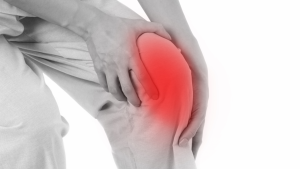
Finding Relief from Arthritis Pain
Treatments for Arthritis Pain Relief
-
The Right Pair of Shoes
According to a study, researchers found that in people with osteoarthritis, flexible shoes like flip-flops and sneakers reduce the force exerted on knee joints by an average of 13% compared to clogs and specialty shoes.
More force on joints equates more pain, so if by wearing flexible shoes there is less force, it should mean there is less pain. This is best to relieve pain in those who suffer from osteoarthritis of the knee and hip.
2. Aquatic Exercises
Water provides a resistance that increases the intensity of an exercise while also providing buoyancy that supports your bodyweight and relieving pressure on your joints.
Water aerobics and exercises have been proven to help improve range of motion, coordination, quality of life, and reduce body fat. While it may not be a long-term solution, patients who participate in aquatic exercises find relief from arthritis pain.
3. Yoga
Yoga, specifically Iyengar yoga that focuses on proper body alignment to support the body and relieve tension, is an excellent way to help relieve arthritis pain. Yoga is helpful in patients with rheumatoid arthritis in relieving pain, improving mood, and the ability to cope with their chronic arthritis pain.
- Supplements
Natural supplements are regularly being researched and approved for help in relieving pain associated with arthritis. Many supplements have properties that act as natural anti-inflammatories and the ability to stimulate neurotransmitters, like serotonin, which reduce pain receptors. Some supplements include:
- Indian Frankincense
- Tumeric
- Fish Oil / Omega 3
- Ginger
5. Massage
Regular massages help relieve tension and relax muscles and joints. Professional massages lower the body’s production of cortisol (the body’s stress hormone) and the neurotransmitter substance P, which is associated with pain. Massages help improve patients’ moods by boosting serotonin levels.
6. Therapy
Different kinds of therapy – exercise, physical, and cognitive behavioral therapies – are all beneficial to patients who suffer from arthritis pain. It improves your body’s strength, posture, range of motion, and functionality. Exercise is known to improve your mood, and when used in conjunction with cognitive behavioral therapy (CBT) it can be incredibly helpful in reducing pain.
CBT, or talk therapy, helps you identify pain points and makes you more aware of the anxieties and stress that is often associated with types of chronic pain like arthritis.
7. Sleep
Giving your body time to rest and relax at night is one of the most effective ways for it to heal and be free from pain. However, if you suffer from chronic pain, then you know that sleep is often disturbed and unachievable. Sleep deprivation can make pain worse and negatively affect your overall health.
Developing a strict schedule, setting alarms when it’s time to wake up and go to bed, help your body’s internal clock and help “reset” your natural sleep cycle. Napping disrupts the cycle, as well as trying to “catch up” on sleep on the weekends.
Being more active during the day can not only help reduce pain, but it will tire you out and make falling asleep easier. Studies have shown that patients who get seven or more hours of sleep a night are happier and healthier.
Arthritis can affect people in many different ways. If you experience any problems or have concerns about using at-home arthritis treatments, talk to your doctor. If you are currently taking medication for your arthritis pain, speak to your doctor before taking any supplements or undergoing any type of therapy for safety purposes.
Pain does have a purpose, although it can be uncomfortable. When pain overstays its welcome, it can alter your quality of life and prevent you from living your best life.
Chronic pain can be debilitating and for patients who have suffered for years with pain and discomfort, they may not be interested in undergoing perhaps another surgery or trying a new pain medication. Patients who have chronic pain just want relief and to restore a sense of normalcy to their lives.

Learn how to manage your pain on a daily basis
Thanks to extensive research and the evolving field of pain management, there are more options than ever for effectively managing chronic pain on a daily basis, whether at home or on-the-go. Many of these options are natural remedies and can effectively help reduce pain without taking medications.
Ways to Manage Pain on a Daily Basis
- Hot and Cold Compress
Two tried-and-true methods, these are still a great foundation for relieving pain at home. A cold compress can be used to relieve pain, decrease inflammation, and reduce muscle spasms. Heat increases your pain threshold and relaxes muscles. If a homemade ice or heat pack don’t do the trick, as your physician for advice or versions of this treatment method. They may be able to suggest a device or way to apply heat or ice that penetrates deeper into your muscles.
- Therapeutic Massages
While massages can be an indulgence and be very relaxing, they can be very helpful to those in pain. Massages work tension out of muscles and joints and relieve stress and anxieties. Massages often produce a “competing” sensation that is more powerful than pain signals and distracts you from the pain you experience.
- Yoga
Yoga affects all aspects of the body: physical, emotional, spiritual, and vital. The yoga postures (asanas) and breathing aspects (pranayama) affect the psyciological system and trigger a “relaxation response” in the neuroendocrinal system. What this means is that yoga can decrease metabolism, stable blood pressure, reduce muscle tension, and diminish fatigue. Additionally, yoga can help reduce anxiety and stress from coping with chronic pain.
- Biofeedback
Biofeedback combines relaxation techniques with breathing exercises in conjunction with a biofeedback machine. This machine creates data from heart rate and blood pressure into visuals like a graph or animation. Watching that animation gives you a sense of control over your body’s responses to pain.
To say that COVID-19 has thrown a wrench into our daily lives would be a massive understatement. As pain management professionals, we had to quickly adapt to the challenges this pandemic put in front of us and navigate a new landscape of twists and turns while continuing to provide top-notch healthcare to our patients.
Telemedicine for Pain Management in NJ

Telemedicine for Pain Management in NJ
One of the most significant changes the COVID-19 pandemic has brought about is the way we meet with others. Video conferences have replaced in-person meetings in the workplace, and the same holds true in the healthcare industry. Thanks to technology, we were able to transition smoothly to a telemedicine-based approach, whenever appropriate.
Telemedicine allows us to communicate with our patients while minimizing the risk of infection. Chronic pain doesn’t stop for a pandemic, so video chats and phone calls allow us to provide the same level of healthcare without putting our patients or employees at risk.
Some of the things we can utilize telemedicine for include:
- Initial Consultations
- Prescription Refills
- Follow-up Appointments
Beyond minimizing the risk for infection, telemedicine came with other added benefits, including:
- Eliminating the need for travel for our patients
- Increased efficiency for our practice
- Ability to assess our patients in their home environment
- Ability to work with patients outside of our immediate geographical area
There are certainly procedures and situations that require us to meet with our patients face to face, and we take appropriate safety precautions in those cases.
If you are interested in telemedicine for your pain management, contact us today here.
COVID-19 Vaccinations and Steroid Injections

Covid-19 Vaccinations and Steroid Injections
With the emergence of the Pfizer, Moderna and Johnson & Johnson COVID-19 vaccines, we need to be mindful when scheduling steroid injections for chronic pain relief. While there is no data to support negative interactions between steroid injections and COVID-19 vaccine administration, it is accepted as a general rule of thumb to wait 2 weeks before and 2 weeks after the administration of the vaccine before receiving any steroid injections.
Since there is no long-term data yet on COVID-19 vaccines, the 2-week waiting window is derived from guidance on other existing vaccines. While there hasn’t been any evidence of immunity suppression from the steroid injections, it’s better to err on the side of caution until we have enough data on the subject.
Pain Management in COVID-19 “Long Haulers”
COVID-19 survivors may be at risk of opiate addiction, due to the high rate of pain medications being prescribed while recovering from the virus. While hospitalized, these patients may be prescribed opiates such as OxyContin, Vicodin or Codeine for their pain or anxiety. For example, patients put on ventilators to assist with breathing, may be sedated in order to remain comfortable.
This puts a whole new group at risk for future opiate dependency without the proper guidance from an experienced pain management doctor.
Alternative treatments such as physical therapy, over the counter anti-inflammatory medication or biofeedback may be recommended for long haulers in lieu of opiates.
These are just a few of the ways pain management healthcare has changed in the face of COVID-19. While we continue to face new challenges as variants of the virus emerge, you can always count on Progressive Pain Management to evolve and adapt. Our goal is to provide our patients with the best pain management throughout New Jersey!

